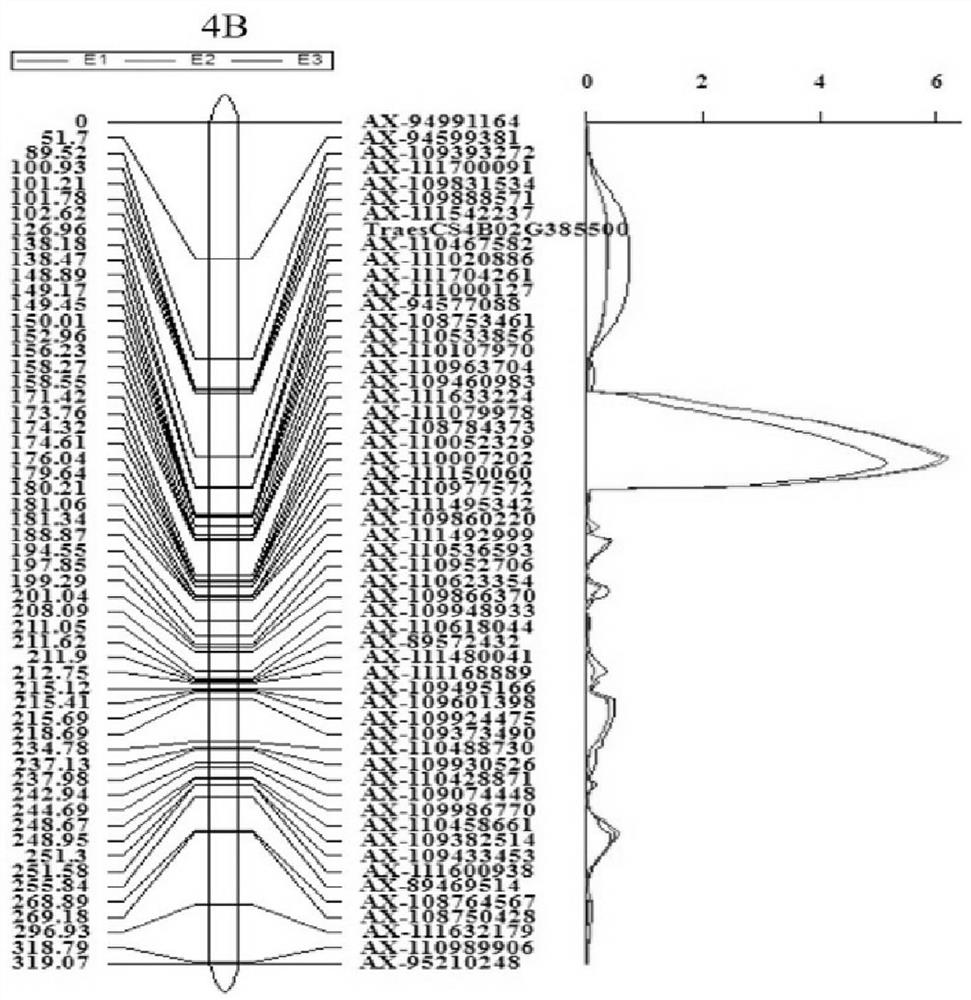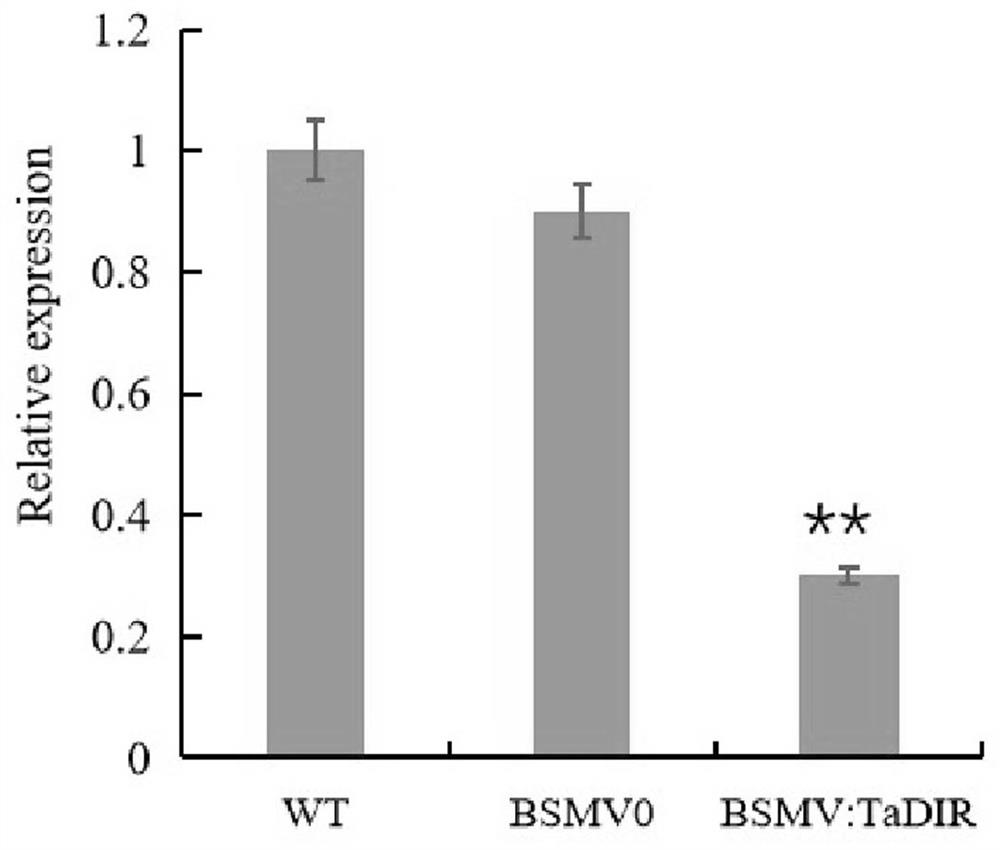The related gene tadir-b1 of wheat stem rot and its application
A technology of stalk rot and tadir-b1, applied in application, genetic engineering, plant genetic improvement, etc., can solve the problems of differences in resistance of wheat varieties, inconsistent identification conditions and evaluation standards, and slow progress in gene mining. To achieve the effect of saving time and resources
- Summary
- Abstract
- Description
- Claims
- Application Information
AI Technical Summary
Problems solved by technology
Method used
Image
Examples
Embodiment 1
[0057] Example 1: Identification of stem rot resistance of different wheat varieties
[0058] 1. Test strain selection, experimental soil preparation and medium preparation
[0059] The strain used in the test is Fusarium pseudograss WZ-8A, which is currently a popular strain in the Huanghuai wheat area.
[0060] The soil used in the experiment was loam with moderate fertility. Before using the soil, weeds and large clods were removed with an 18-mesh sieve, and then sterilized in a sterilizing pot of 0.1 Mpa at 121 °C for 1 h for use.
[0061] The medium used in the experiment included PDA medium and millet medium. Wherein, the preparation method of PDA culture medium is: choose the fresh potatoes of moderate size, peel and cut into medium thin pieces, take 200g thin pieces and put them in the pot, add distilled water and boil for about 20min, when the potato pieces can be easily smashed with a glass rod Filter with four layers of gauze. The filtrate was returned to the pot...
Embodiment 2
[0066] Example 2: Wheat stem rot-related genes TaDIR-B1 locating and obtaining
[0067] Through phenotypic identification, 435 wheat varieties with different resistance to stem rot were distinguished, and further combined with population 660KSNP chip information (Beijing Compson Biotechnology Co., Ltd.), genome-wide association analysis (GWAS) was performed after quality control to identify SNP loci significantly associated with wheat stem rot, such as figure 1 shown. Haplotype analysis was performed on the identified significant SNP loci on chromosome 4B, and the results were as follows figure 2 As shown, it shows that a block is formed and contains 5 haplotypes, and the disease index of the corresponding materials of different haplotypes is significantly different.
[0068] Further utilizing the above-mentioned SNP site, to EnsemblPlants The Chinese spring data information in the database was blasted, and it was found that these SNP loci-locked segments were located ...
Embodiment 3
[0078] Embodiment three: TaDIR-B1 Allelic marker development and application
[0079] According to the G / A separation of the 15th base from ATG in the sequence of SEQ ID NO.1 between different materials, a dCAPS marker was developed to detect this mutation site, and the differential site-specific primer pair included:
[0080] The nucleotide sequence of the upstream primer sequence shown in SEQ ID NO.6 is 5'-ACTTTTGCGTCGTAGTGAGC-3' and
[0081] The nucleotide sequence of the downstream primer sequence shown in SEQ ID NO. 7 is 5'-GGAGGACGAGAAGCAGCGGCAGTGG-3'.
[0082] Utilize specific restriction endonucleases Bal1 The amplification product is digested with enzyme digestion, wherein the sequence with the differential site G in the amplification product is processed by Bal1 Wheat varieties / lines with 170 bp after digestion were named as TaDIR-B1a Allelic genotype, the sequence with the difference site A in the amplified product was Bal1 Wheat varieties / lines that are s...
PUM
 Login to View More
Login to View More Abstract
Description
Claims
Application Information
 Login to View More
Login to View More - R&D
- Intellectual Property
- Life Sciences
- Materials
- Tech Scout
- Unparalleled Data Quality
- Higher Quality Content
- 60% Fewer Hallucinations
Browse by: Latest US Patents, China's latest patents, Technical Efficacy Thesaurus, Application Domain, Technology Topic, Popular Technical Reports.
© 2025 PatSnap. All rights reserved.Legal|Privacy policy|Modern Slavery Act Transparency Statement|Sitemap|About US| Contact US: help@patsnap.com



